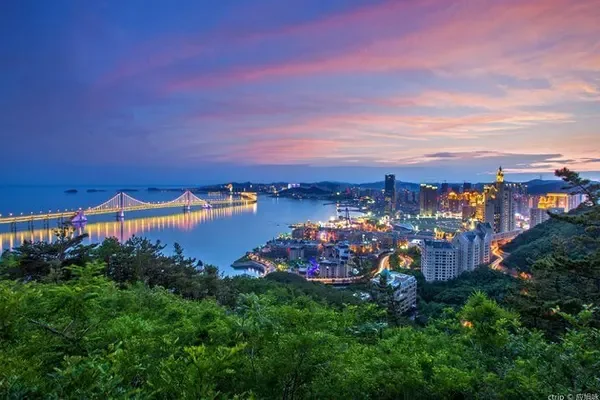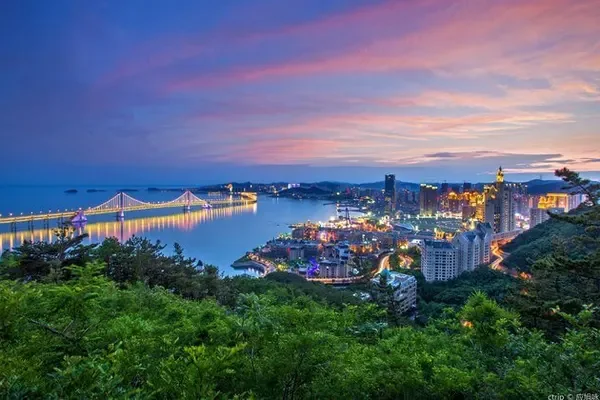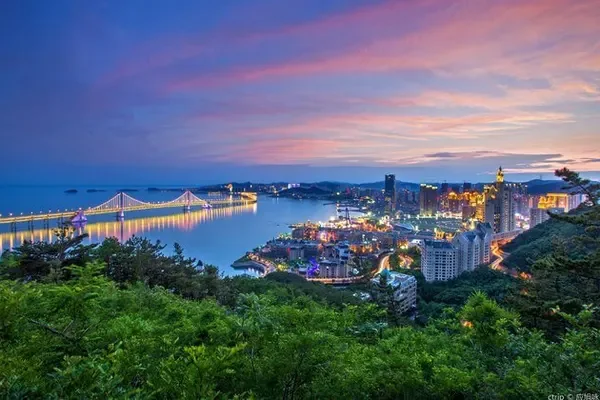On the night when I just finished writing the last travel note, a 6.5-magnitude earthquake occurred in Hualien, causing heavy casualties and property losses. Immediately contact our homestay hosts in Hualien on WeChat, and wish them all the best. Silently pray for Hualien, Hualien come on! Defeat disaster!
After finishing our trip in Taipei, we took the train to Hualien, the next stop. The ticket was booked by the landlord in Hualien. It is very convenient to pick up the ticket at the ticket window of the upper station in Taipei. Most of the train seats in Taiwan are arranged in one direction (the direction of the train), only in the middle of the carriage there are four rows of seats facing each other and there is a small table in the middle. When buying a ticket, only 4 tickets (people who know each other) will sell you such a seat at the same time, in order to avoid the embarrassment of strangers sitting opposite each other. In my opinion, there is no need for this. Taiwanese people are very talkative and enthusiastic. Taking a taxi in Taiwan, my brother's "Kanshan" level is no worse than that of Beijing's brother. Speaking of "brother", there is another story that moved us. I left my phone in the car when I took a taxi in Taipei. Just when I was standing on the side of the road at a loss, the driver turned around and sent me back. I didn't remember the driver's name or car number, but I remembered that he told me in the car, "His parents came from mainland China, and his mother's hometown is Beijing." I also remembered a bit of information, the taxi company he works for is called "Taiwan Grand Team".
The train entered Yilan and turned to travel due south, continuing along the east coast. On both sides of the train are the mountains (Central Mountains) and the sea (Pacific Ocean). The beautiful scenery brings joy to our journey. In the area bordering the south of Yilan and the north of Hualien, Feitianpan Mountain, Qingshui Mountain, Qianliyan Mountain, and Liwu Mountain in the central mountain range extend to the seaside, and trains pass through the caves from time to time. After passing through these caves, the train will arrive at Hualien City, and then the railway will continue south along the Huadong Rift Valley.

railway through the cave

Hualien street

The master craftsman who carved the seal on the street
The wonder of mountains and seas - Qingshui Cliff. These peaks extending to the sea are mainly composed of limestone. Under the erosion of seawater for many years (the main chemical composition of limestone is CaCO3, which is easily eroded by water), it has formed a spectacular scene of cliffs standing hundreds of meters high and inserting into the sea. The seawater near the cliff contains dissolved calcium carbonate, which is light blue and very clear. Extending to the distant sea, the color intensifies until dark blue. Overlooking the cliff, there is a vast expanse of blue waves. The turbulent waves hit the cliff, which is breathtaking. Such scenery is particularly precipitous in the southeast cliff of Qingshui Mountain, hence the name of Qingshui Cliff.





Qingshui Cliff
The geological structure of limestone has also created another spectacular scenic spot - Taroko Grand Canyon. The entrance of the Grand Canyon is about 20 kilometers away from Hualien City. Liwu River, originating from Qilai Peak in the central mountain range, twists and turns eastward from an altitude of 3,449 meters, and rushes to the sea with a drop of more than 3,000 meters after flowing for tens of kilometers. The marble mountain with calcium carbonate as the main component has been cut and eroded by streams for 4 million years, and the collision of the earth's plates has continuously uplifted the mountain, forming a canyon wonder about 80 kilometers from Dayuling in the west to the mouth of Liwu River in the east. The 20-kilometer section of the middle reaches of Liwu River is the essence of the canyon scenic spot, with undulating mountains, cliffs and valleys, lush vegetation, and vast clouds and mist. Taroko people have lived in this mountain for generations, hence the name of Taroko Gorge. For thousands of years in this mountain, there are only sheep intestines and small roads that vehicles cannot pass through, so few tourists arrive here. Beginning in July 1956, thousands of veterans from the mainland (they are called "veterans") under the guidance of engineers and technicians spent 3 years and 9 months repairing the mountain roads on the east and west sides of the central link island of Taiwan Island. ——Zhongheng Highway, so it also unveiled the veil of this "beauty hidden in the boudoir". In November 1986, Taroko National Park was established to show the wonders of the canyon to the world. This road starts from the east and extends along Liwu River, and is connected by tunnels and bridges in the middle. Due to the special geological conditions and frequent earthquakes, the construction of this road is extremely difficult, and 212 road builders have sacrificed their precious lives. Today, people built a ancestral hall in a mountain depression - Changchun Temple to enshrine their spiritual tablets.

Entrance of Taroko National Park on Zhongguan Highway





Taroko Grand Canyon
It is very obvious to observe the limestone landform near the "Cimu Bridge". Below the road, the mountains washed by the river are exposed to gray-white rocks, and above the road are black mountains. This is also the confluence of Liwu River and Shakalong River, a tributary. The long flow of Liwu River has brought a lot of turbidity with mud and sand, while the flow of Shakalong River is short (only about ten kilometers) and the upstream has no limestone and the water quality is clear. After the confluence of the two rivers, there is a long period of "clear distinction between Wei and Wei". There are also some mountaineering plank roads built along the highway, Shakalong Trail, Xiaozhuilu Trail, etc. Visitors can climb up the steps along the trails to enjoy the beautiful mountains and rivers. Many mountains are also covered with snow this season. The most thrilling section of the Zhongheng Highway is Yanzikou. The highway is dug out of the cliff along the stream. Tourists get off at the mountain pass and walk through this section. The many eroded caves on the cliffs by the stream have become the most favorite places for swallows to build their nests. Due to the complex geological conditions, tourists must wear safety helmets when visiting Yanzikou to prevent falling rocks from hurting people. Taiwanese are used to calling all rivers flowing down from the central mountain range "xi". They believe that these dozens of kilometers of waterways are too short, and only those that flow through hundreds or thousands of kilometers can be called rivers. But the width and volume of these streams is by no means a trickle as we literally understand it.

Mother Bridge

Liwu Creek

Shakalong Creek

On the road under the bridge

Suspension bridge on the trail

Sermons in Shaka

Xiaozhuilu Trail






Yanzikou section
Buluo Bay, a platform surrounded by mountains, used to be the tribe where the Taroko people lived concentratedly. At the entrance of the village, a statue of the national hero of the Taroko nationality was erected. He led the tribe to fight the Japanese for 17 years starting in 1897. Today, the Taroko Ethnic Customs Introduction Hall and the Bamboo House Experience B&B Hotel have also been established here. A piece of wild plum blossom outside the house is in full bloom, attracting bees to fly. Most of the plum blossoms seen in the mainland are pink, but the wild plum blossoms here are snow-white. There is also a small screening hall that regularly screens excerpts of a documentary that reflects the lives of the Taroko people. In the mountains, Taroko people live mainly by hunting, and also cultivate small pieces of land to grow food. In the past, one of their most special customs was facial tattooing. Boys culled the first prey to mark adults to have facial tattoos. Girls learned to weave cloth (not cotton, but use a kind of rattan to draw out fibers to weave cloth). It means that when you are mature, you have to get a tattoo. The people of Taroko hunted in the mountains and practiced hard work on climbing rocks and walls. Today, most of the construction work on cliffs around the world is undertaken by Taroko people. Of course, the wages are high. After crossing the Cimu Bridge road in the mountain stream, we circled up the mountain. There is also an inhabited village called Tianxiang Village on the top of the mountain. Due to the high altitude and low temperature, we did not go up there with our three-year-old grandson.

Entrance to Buluo Bay Terrace Village

The national hero of the Taroko people

government notice board

Taroko Wax Figures

Restoring the Bamboo Houses of the Taroko People

Taroko people textile utensils

Photo of the last Taroko woman with tattooed face


Wild Plum Bloom

In the restaurant, pictures of Taroko women are used to mark the women's toilet
There are no tickets for Taroko National Park tours, and free tours (a major advantage of Hualien tourism is that many scenic spots do not charge tickets).
Hualien City is located on a small plain at the northern end of the East Rift Valley, facing the vast Pacific Ocean. There are two flat bays near the urban area, one is called Qixingtan and the other is Nanbin Seawall. There is no soft sand on the seashore here, it is all stones and pebbles. Because there is a deep trench very close to the coast, the Pacific Ocean current stops here abruptly, so the waves here are particularly large. When the tide is high, the waves behind push the waves ahead, and it is spectacular to continuously flock to the shore. Strolling along the seashore in Hualien, you can pick up very beautiful stones, some with unique patterns and some crystal clear. Our landlord has a palm-sized stone in his home, and the pattern on it is like a map of Taiwan. When we left, he gave us this stone as a souvenir.





father and son fishing by the sea



Nanbin Seawall

stone resembling a map of taiwan
There is also a scenic spot worth seeing in Hualien City called "Pine Garden". This is the official residence and command post of the highest chief executive of Japan in Hualien built during the Japanese occupation in 1930s. The courtyard is famous for its large pine trees over one hundred years old. There were originally two two-story buildings in the courtyard, but one is now preserved. The other building was assigned to the courtyard of the Hualien Electric Power Company next door. The shape of the small building is a bit of European architectural style, with columns and corridors. But the roof is a Japanese-style wooden leaky wooden roof. This pavilion is located on a small hill beside the Suhua Highway, and you can look out to the vast Pacific Ocean from the park. Sitting under the big pine tree and drinking a cup of coffee, looking at the Pacific Ocean in the distance has a special charm. Tickets for Pine Garden are 30 NT dollars, which can be discounted to 30 NT dollars at the canteen in the park.




Hualien Pine Garden
Since the seabed in the Pacific Ocean in the east of Taiwan is a very deep trench, some large marine animals often appear in the coastal waters. Another activity on the eastern coast of Taiwan is to go out on a boat to watch dolphins and whales. We only enjoyed it once in Hualien. The boats that go out to sea are not big, only a few tens of tons can hold fifty or sixty people. The boss of the boat said that he has 30 years of sailing experience and knows that dolphins and whales often appear there. The boat was only two or three kilometers away, and in the sea opposite Qixingtan, I turned off the engine and waited quietly. With the exclamation of "Come! Come", I saw a group of dolphins swimming over. The boss of the boat said that these are long-nosed spinner dolphins, and they are not too big. An adult dolphin weighs about 70 kilograms. The belly is white, the back is black, and the mouth is slender. Their biggest feature is that they can jump out of the water and rotate 180° before falling into the water. They are known as ballet dancers in the dolphin family. This group of long-nosed spinner dolphins has about 20 of them, rolling up and down, dodging and moving in the water, having a great time. After seeing this pod of dolphins, the boat headed south along this meridian. "Here we go again", we saw a group of huge marine animals. Everyone mistook it for a whale at first. The captain of the boat introduced that it was a bottle-nosed dolphin, weighing six to seven hundred kilograms and more than three meters long. These dolphins do not jump out of the water, only glide on the water with their high dorsal fins, and spray water from time to time. Whale watching boats do not feel seasick when driving at high speed, but most tourists start to feel uncomfortable when the boat sways with the waves when it stops on the sea and moves slowly. Several adults in our company vomited, but nothing happened to our three-year-old grandson. The captain asked for everyone's opinions and started to return. On the way, he encountered a group of dolphins. I was too dizzy to listen to what the boss introduced. The entire voyage took nearly 3 hours and we saw three types of dolphins. Unfortunately, no whales were seen, but if you are lucky, you may be able to meet them.
The fare for whale watching is NT$1,000 per person at the pier. We are the landlord of the homestay and booked a 25% discount. It is quite worthwhile to open your eyes.

whale watching boat

Hualien Harbor Lighthouse


This is a free dolphin living in the sea

On the return flight, looking at Hualien City from the sea
![[Travel around Taiwan in fifteen days] Hualien, Hualien](https://www.anyonetrip.com/uploads/202302/14/f7b3a400dd9ea7e9.webp)


